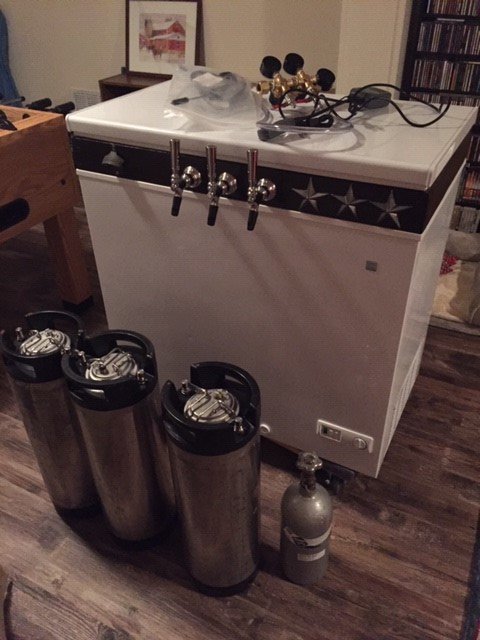I'm sure there are a lot of good videos and blogs about this, but I'll give my input here anyway. haha.
Sanitation is just as important, think of the keg as one big bottle. Since you are using sixtels with I'm assuming sankey valves, you will want a method of being able to clean them out with confidence. What that means to me, is a way of removing the spear, and being able to get in there - you will probably start with just a flashlight and carboy brush, but will want to look into building a keg cleaner (think of a subersible pump in a bucket with solution and shooting the solution into the keg which will be inverted on top of it - lot's of examples online, I built one myself).
To remove the spear, there are two main types of valves, one held in with a flat spring, and the other is threaded in. Anytime you are going to remove the spear, ensure that you have completely degassed the keg first! There are good tutorials you can find online on how to remove the spear held in with the spring, and if yours is threaded, there is a special tool that I'd recommend for you to get (I have both types, so I bought the special tool for the threaded ones).
Now, as far as kegging itself. You will want to pressure test your kegs to make sure they don't have any leaks (sankey kegs have a great advantage here in that they tend to be much more leak resistant and predictable). You also want to make sure that your CO2 tank, regulator, tubing, and sankey couplers are leak free. If you are going to use clamps, I'd recommend the appropriate sized oetiker clamp rather than the worm drive clamps you get at homedepot.
If your kegerator has a thermostat that you can set, I'd recommend setting it between 35F-40F. If it has an analog scale, you will want to run it for a few days with buckets of water inside to get an idea of what the exact temperature is inside at a particular setting. This is important when deciding on the pressure for the volumes of CO2 you want.
Look up a CO2 volume table, and find the temperature that your kegerator is set at, and find the volumes of CO2 you desire (most average beers will be in the 2.4-2.8 range, most people seem to be around 2.5 for most beers, myself included). That will tell you what pressure to set your regulator to.
Now that you have the pressure, you can find an online beerline length calculator (I always forget the one preferred here, I'm sure someone will link it), and calculate how much beerline you will want to have. You also need to choose what kind of beerline you want. I use bevseal ultra 235, there is a relatively new EVA kegland line that has some great reviews, and a whole slew of other kinds. If you are using a tower, that can physically restrict you from being able to use the more rigid line like the bevseal ultra that I use, so you will need to figure out what can physically work for you. Once you've decided on the beerline, you can plug the dimensions into the calculator to figure out how much you will need. I always get extra, just in case. You can do some reading about plastic taint and line oxidation if you think that may be of concern for you (it is for many here, myself included).
If your kegerator comes with rear sealing taps, I'd recommend replacing them with forward sealing taps. Intertaps are fairly popular and inexpensive. I am partial to Perlick, and have a whole bunch of 650ss faucets. whatever you get, I'd recommend sticking to stainless all the way (to include the shanks as well).
If your kegerator is with a tower, you may also want to look into tower cooling setups to reduce initial foaming when you pour your beer due to warm faucets. There are kits you can buy that use a computer fan and some tubing with a power supply to circulate cold air up there that I've heard can work well.
You will need to decide how to carbonate your beer in the keg. By far the most common is to force carb with your CO2 tank. I do a quick method where I hook up the CO2 and roll the keg around, and if you set your regulator at the correct psi for the temperature the beer is at, you won't overcarb the beer.
Other general recommendations:
-I'd recommend getting a spare CO2 tank (I personally have five 20# tanks and two 50# tanks). You always seem to run out of CO2 at the most inopportune times, but having a spare will save you from an emergency.
-For a regulator, I'd recommend starting with a taprite and staying away from cheaper ones if you can afford it.
-For a sankey coupler, I'd recommend an all stainless one. I've bought multiple of one particular one off amazon for around $36 that I like, I can find a link for you if you want it.
-I personally never leave the CO2 connected to my kegs, as I'm paranoid about leaks. I just gas up when needed, and then disconnect again.
-Keep a spare regulator gasket seal to the CO2, as you may lose one when disconnecting the regulator from the CO2 tank
-search around, read as much as you can, and ask questions when you have them!


